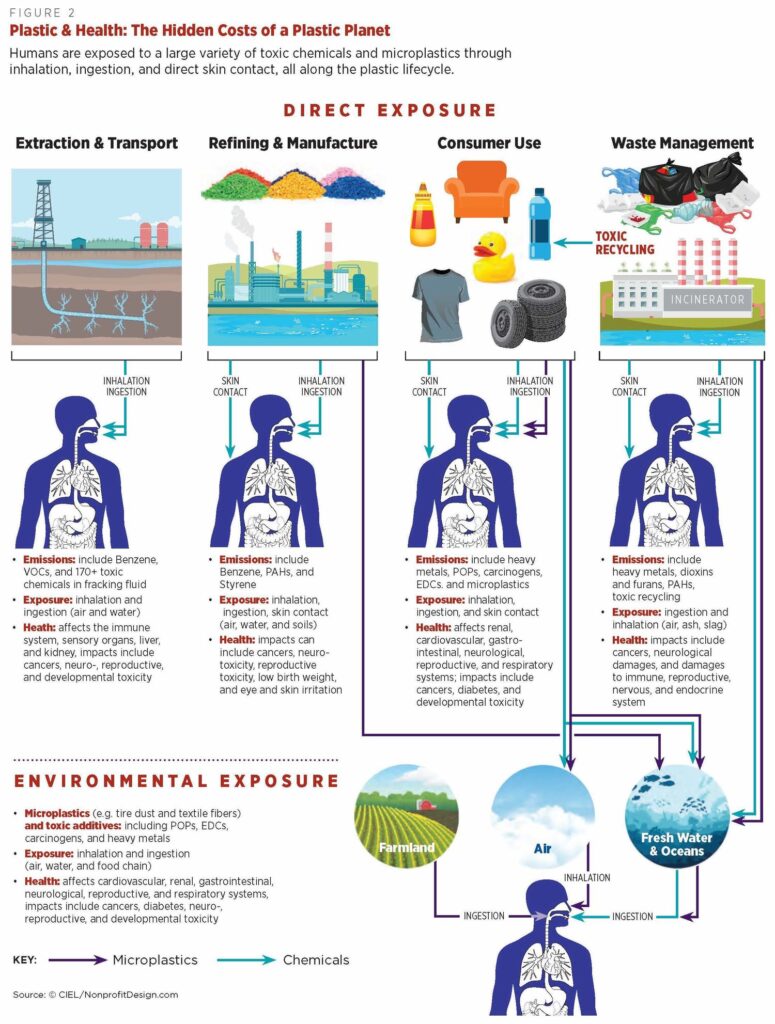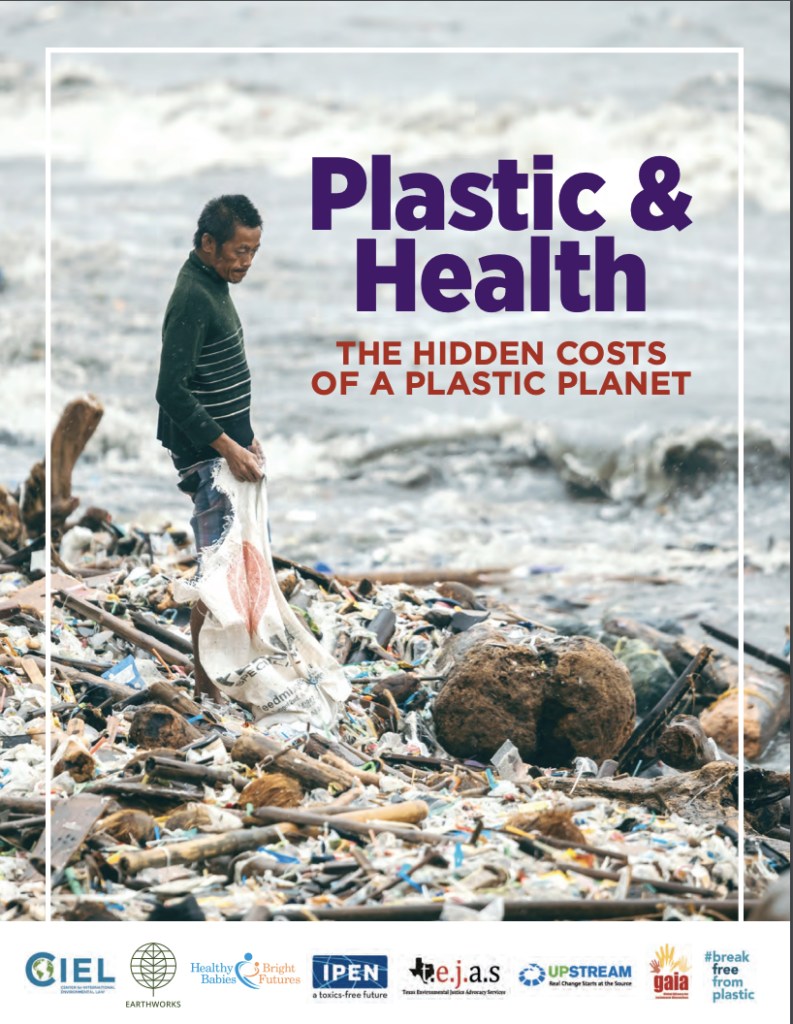For years now, we have known that plastics have a huge impact on our health and environment.
Plastic is everywhere – and we mean EVERYWHERE. It is in our packaging, bottles and containers. They are found in our clothing, bedding, cosmetics, toys, sponges, devices, and even our table salt!
As we begin our #myconscioushealth / #ourconscioushealth series on instagram, we felt it was important to create this post as a preface and reference.
Wait.. but what is the #myconscioushealth / #ourconscioushealth series?
Over the past years, we have been on a conscious living journey and wanted to live more intentionally. Throughout the years, we learned a lot and wanted to share some of our tips and recommendations on how to live consciously to benefit both the planet and your health! To follow along, make sure to follow us on instagram @dr.sukihon!
So without further ado, let’s get started!
CONTENTS
A BRIEF HISTORY
Over the past century and a half, humans have learned how to create synthetic polymers (“molecules of many parts”). We were able to manipulate them, and eventually created ones that were strong, light, and flexible – to what we now call plastic (1).
It was originally created to replace and imitate natural substances as we were aware that our natural resources were limited. The first synthetic polymer was created in 1869 by John Wesley Hyatt to replace ivory, tortoiseshells, horns, and linens. This was extremely exciting because now we are no longer constrained by what nature has to offer (1).
Although it was able to solve the problem of finite resources, it poses several other problems now: greenhouse gas (GHG) emissions, ocean pollution, wildlife diversity, health problems, etc.

During every stage of its lifecycle, plastics contribute to both climate change and our health (2).
THE ENVIRONMENT
Oil, gas, and coal are the fossil-fuel building blocks of plastics (3). Throughout the entire extraction and transportation of these fuels, massive amounts of GHG are released. From methane leaks and flares to fuel combustion, energy consumption from drilling to land disturbances, all these contribute to climate change. Just from the U.S. alone, 12.5 to 13.5 million metric tons of carbon dioxide are emitted each year (3).
Refining and manufacturing of plastic is even more GHG intensive. Just from manufacturing ethylene alone (a precursor to polyethylene, the most commonly used plastic today), it released 184.3-213 million metric tons of carbon dioxide in 2015, and this number is expected to expand by 34% in 2030 (3).
A large proportion of the plastics used globally are for single use. Once disposed, plastics either go into the landfill, the recycling facilities, or are incinerated. Whichever route it goes to, it leads to GHG emissions (3).
But plastics that enter the environment doesn’t end there.
Plastics are not biodegradable. They break down into smaller and smaller pieces (“micro plastics”) which continually release GHG into the environment!
DID YOU KNOW:
Plastics stay in the environment for ~400 years?! This is because we add several additives in their production to make them stronger, more flexible, and more durable for our use!
BUT WHAT ABOUT RECYCLING?
This system is far from perfect. Americans discard more than 30 million tons of plastic each year, and only 8% gets recycled (4). Black plastics, plastics #3, #4, #6, #7, contaminated plastics, coated plastics etc are difficult if not impossible to recycle. Even then, most of these “recycled” packaging waste is downcycled into lower value or unrecyclable products. In other words, we are simply delaying the plastic’s journey to the landfill.

Every year, about 8 million tons of plastic waste escapes into the oceans from coastal nations (5). This is equivalent to setting FIVE garbage bags full of trash along every foot of the coastline around the WORLD. How crazy is that?
70% of this will eventually sink and damage the wildlife on the seabed. Microplastics act as a sponge that binds to toxic chemicals that wildlife then inevitably eats. 1/3 species of marine mammals have been found entangled in marine litter, and over 90% of all seabirds have plastic in their stomachs which leads to starvation. Millions of animals are killed by plastics every year (5).
OUR HEALTH
Similarly, every stage of plastics’ lifecycle also poses several risks to our health from exposure to particles themselves or its associated chemicals (via inhalation and ingestion (2).
Plastics pollute our soil, water, and air. It’s in the food we eat (remember the wildlife that eats the microplastics?), and even found in our drinking water!
By its nature, plastics contain many different toxic chemicals to allow it to have the properties we find so functional.
This include bisphenol A (BPA), polyvinyl chloride (PVC), phthalates, antiminitroxide, brominated flame retardants, and polyfluorinated chemicals to name a few (6). These chemicals are associated with cancers, neurological, reproductive, developmental, immune, and endocrine system plus more.
Here are some examples of their health effects:
- Phthalates: inhibit androgens, are linked to hormonal disruption and reproduction, decreases semen quality, increased endometriosis risk, developmental disorders, asthma, infant/child neurobehavioral outcomes, and can damage our liver, kidney, lungs, and reproductive systems (7,8).
- BPA & BPS: hormone disruptors linked to breast and prostate cancer, early puberty, metabolic diseases, chronic respiratory diseases, obesity, reproductive disorders, infertility, ADHD, and cancer (9,10).
- Per/Poly-fluorooctanoic acid (PFAS): endocrine disruptors associated with increased cholesterol, low infant birth weights, lowers immune system, liver and kidney damage, thyroid disruption, cancer (12,13).
- No.3/PVC: linked to birth defects, skin damage, liver and spleen issues, immune damage, cancer, releases phthalates and PFAS. Inhalation can lead to dizziness or sleepiness. High levels can be fatal (changes LV structures). Can affect sex drive, sperm, testes, menstrual cycle (11).
- No.6: releases styrene when heated; linked to depression, fatigue, kidney dysfunction (14).
- No.7: often contains BPA (14).
Of course, this is just the beginning of the impacts plastics can have on our planet and health!
If you are curious to learn how you can live consciously and intentionally to benefit the earth and your wellbeing, make sure to follow us on instagram by clicking here or scanning the QR code below and our hashtags for our series!

ABOUT THE AUTHOR

Suki has been leading a more intentional lifestyle for the past couple of years. As an aspiring minimalist and imperfect low-waster, she has come to learn about the benefits of living consciously. With a passion for sharing her knowledge, #myconscioushealth #ourconscioushealth series was born.
References:
- https://www.sciencehistory.org/the-history-and-future-of-plastics
- https://www.ciel.org/plasticandclimate/
- https://www.yaleclimateconnections.org/2019/08/how-plastics-contribute-to-climate-change/
- https://www.nationalgeographic.com/news/2017/07/plastic-produced-recycling-waste-ocean-trash-debris-environment/
- https://plasticoceans.org/the-facts/
- https://www.journalijdr.com/impact-plastics-human-health-and-environment
- PMID: 28800814
- PMID: 29682520
- PMID: 17825522
- PMID: 25813067
- https://www.atsdr.cdc.gov/phs/phs.asp?id=280&tid=51
- https://www.fda.gov/food/chemicals/and-polyfluoroalkyl-substances-pfas
- https://www.ewg.org/pfaschemicals/
- https://doi.org/10.1016/j.jclepro.2018.11.220
Photo obtained from unsplash.com





